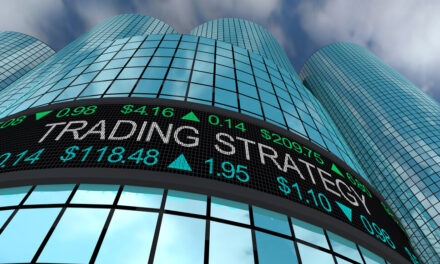Let’s talk about one of the most misunderstood terms in finance — volatility.
Many individual investors think of it as a measure of risk. They associate volatility with losses.
That’s because financial advisers focus on the risk aspects of volatility. They teach individual investors to fear volatility.
Now, I’m not a conspiracy theorist, but it almost seems like they are using volatility to scare investors. Advisers sell themselves as people who can save investors from volatility risks.
All you need to do is pay their annual management fee, and they’ll help you protect your portfolio. In some ways, volatility helps them make money.
While it might appear that way, I don’t believe there’s an actual ploy to create fear of volatility.
That’s because those same financial advisers don’t understand what volatility really means…
The Truth About Volatility
Advisers’ sales materials say market volatility is a risk, and they don’t dig any deeper. That’s the only sales pitch they need…
Volatility is formally defined as a measure of the degree of variation in the price of a financial instrument over a certain period. This definition says nothing about risk. It’s simply measuring how much prices move.
Volatility is often perceived as an indication of risk because the focus is on the risk of significant downward price movements. However, volatility can also lead to substantial gains.
In short, volatility works in both directions.
And it’s almost a requirement for a market-beating portfolio.
The truth is that upside volatility accounts for the market’s biggest gains. In the Nasdaq 100 Index — a volatile benchmark index for tech funds — seven of the ten most volatile stocks have delivered gains that beat the index in the past year.
If you avoid volatility, you will always miss out on the biggest winners.
Of course, that doesn’t mean you should add as much volatility to your portfolio as possible. There’s a bit more to it…
Leverage the Right Volatility for Higher Returns
The bottom line is that we have good volatility and bad volatility. The ideal portfolio maximizes exposure to good volatility and minimizes exposure to the opposite.
That isn’t easy to do. It’s particularly challenging when the most popular measures, like standard deviations, are used to calculate volatility.
But there’s a simple approach right at your fingertips now…
Adam O’Dell’s Green Zone Power Ratings includes Volatility as one of the six factors used to assign ratings to stocks. Adam designed his system to minimize risks and maximize returns.
He included volatility in the ratings because, as many academic studies have shown, low-volatility stocks (i.e., stocks that rate 80+ or above in Green Zone Power Ratings) can increase a portfolio’s performance. And Adam combines three unique metrics to ensure he is measuring volatility correctly.
What’s more, he doesn’t rely solely on the volatility score. The rating system follows a complex calculation that combines multiple factors of both the stock and the company.
His research has proven that stocks rated above 80 overall on his 100-point scale beat the S&P 500 3X over the past 23 years.
You can check the volatility score for any stock (as well as the overall ratings) by entering the stock ticker in the Green Zone Power Ratings search bar right here.
Until next time,

Mike Carr
Chief Market Technician





